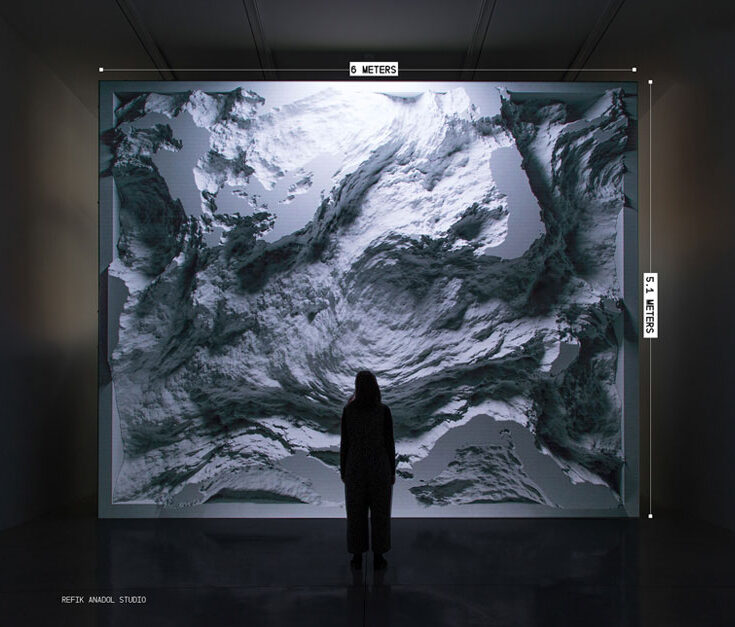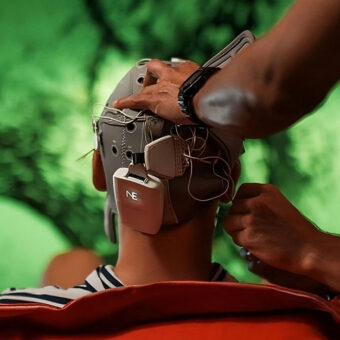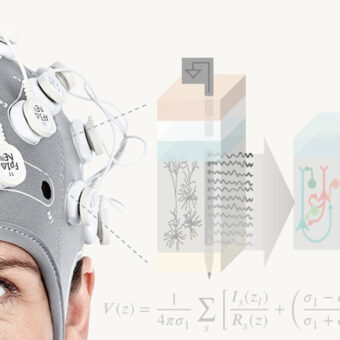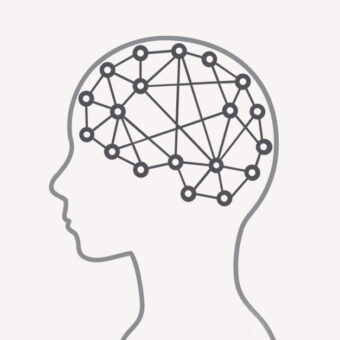Back in 2018, the Pilevneli Gallery unveiled Refik Anadol’s groundbreaking project, Melting Memories, which delved into the materiality of remembering. Art and technology converged in a fascinating use of EEG data to explore memory, data visualization, and human experience.
The Intersection of Art and Neuroscience
The title “Melting Memories” alludes to Anadol’s experience with connections among philosophical works and art with memory as a main theme. It raised questions about the emergence of a new space where artificial intelligence coexists harmoniously with individuality and intimacy.
Melting Memories represented the captivating blend of technology and art, showcased at the Pilevneli Gallery in Istanbul back in 2018. It offered a fresh and innovative perspective on the intersection of art and technology. The project included projections of data paintings and sculptures on a custom 5.1 x 6 meter LED screen.
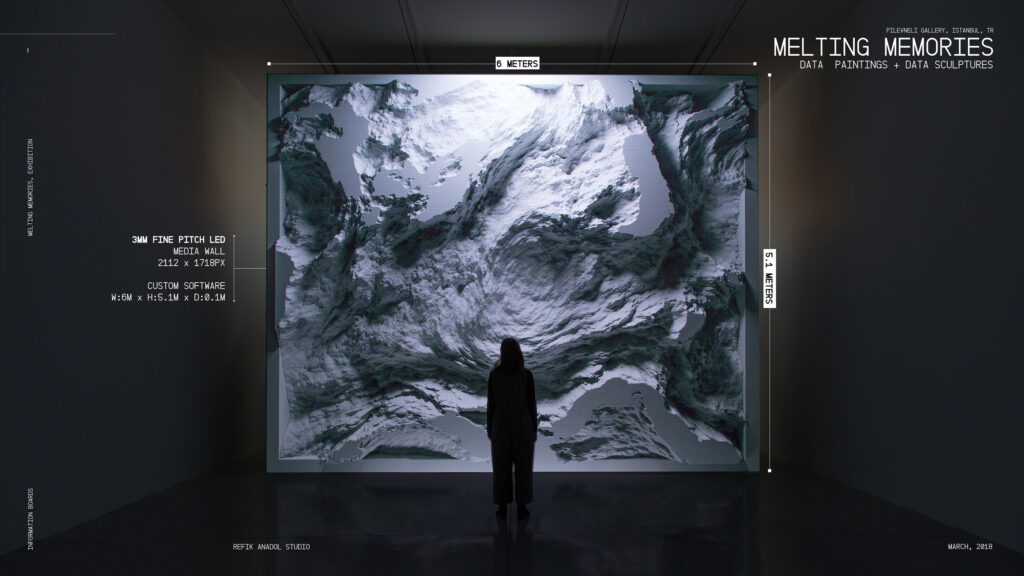
The Technical Process Behind Melting Memories
Anadol conducted experiments at the Neuroscape Laboratory at the University of California, San Francisco to generate the data that was used.
Anadol’s team used our 32-channel Enobio to record EEG (electroencephalogram) and gathered data on the neural mechanisms of cognitive control. Our device was set up with a standard protocol to record participants’ brains while they focused on long-term memories.
This analysis focused on beta and theta channels, pinpointing activation points corresponding to short-term and long-term memories, particularly episodic memories. The specific nodes under examination included Fp1, Fp2, F7, F8, P3, P4, C3, C4, T7, T8, O1, and O2, which also influenced noise parameters within the real-time simulation.
To refine the data, Anadol’s team applied Higuchi’s fractal dimension algorithm and employed FFT for a moving average. EEGLearn facilitated the recurrent neural networks used during the recording sessions to generate spectral outputs. These served as height maps for the visual representation pipeline.
The transformation of EEG data into intricate artistic representations presented technical and conceptual challenges. Anadol’s team turned to FieldTrip, an open-source GPU library for HLSL/VVVV, to efficiently address these challenges. The modular graphics pipeline offered by FieldTrip empowered the artists to explore deeper procedural functions while maintaining an organized project structure.
Conclusion
Melting Memories was an amazing fusion of art and science, showing the potential for creativity in the medical and tech fields. This collaboration brought these two worlds together, offering fresh insights and possibilities.
Do you want to learn about how we used our Enobio to delve into the core of human nature? Then check out our blog post about how we used AI and EEG to interpret our emotions in real-time.
